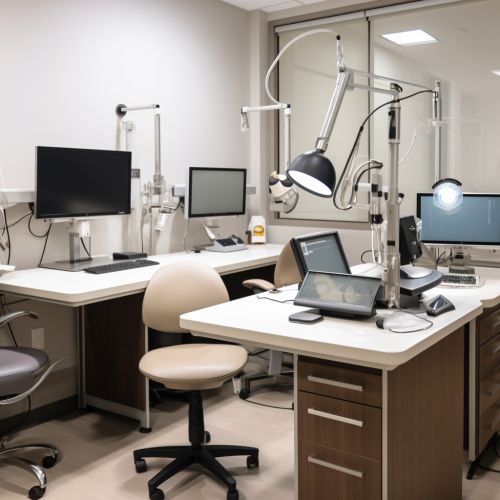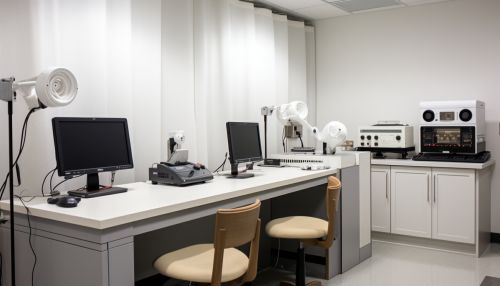Audiology
Introduction
Audiology is a branch of science that studies hearing, balance, and related disorders. Its practitioners, who are called audiologists, diagnose, treat, and manage patients with hearing loss or balance problems. Audiology also involves the fitting and management of hearing aids and other assistive devices.


History
The field of audiology originated in the early 20th century, but it was not until after World War II that it began to develop as a recognized profession. The war created a large population of veterans with significant hearing loss, leading to the establishment of audiology as a clinical discipline. The first audiology degree program was established at Northwestern University in 1946.
Anatomy and Physiology of Hearing
Understanding audiology requires a basic understanding of the anatomy and physiology of the ear. The ear is divided into three parts: the outer ear, the middle ear, and the inner ear. Each part plays a crucial role in the process of hearing.
Outer Ear
The outer ear includes the pinna (or auricle) and the ear canal. The pinna collects sound waves and funnels them into the ear canal, which leads to the eardrum.
Middle Ear
The middle ear contains three tiny bones, known as the ossicles, which are the malleus (hammer), incus (anvil), and stapes (stirrup). These bones amplify the sound waves and transmit them to the inner ear.
Inner Ear
The inner ear contains the cochlea, a spiral-shaped organ that converts sound waves into electrical signals. These signals are then sent to the brain via the auditory nerve.
Hearing Disorders
There are several types of hearing disorders, including conductive hearing loss, sensorineural hearing loss, and mixed hearing loss.
Conductive Hearing Loss
Conductive hearing loss occurs when there is a problem conducting sound waves through the outer ear, tympanic membrane (eardrum), or middle ear. This type of hearing loss can often be corrected medically or surgically.
Sensorineural Hearing Loss
Sensorineural hearing loss is the most common type of permanent hearing loss. It occurs when there is damage to the inner ear or to the nerve pathways from the inner ear to the brain.
Mixed Hearing Loss
Mixed hearing loss is a combination of conductive and sensorineural hearing loss. This means that there may be damage in the outer or middle ear and in the inner ear or auditory nerve.
Evaluation and Treatment
Audiologists use a variety of tests to determine the type and degree of hearing loss. These tests may include pure-tone audiometry, speech audiometry, and auditory brainstem response (ABR) testing.
Once the type and degree of hearing loss are determined, the audiologist can recommend appropriate treatment options. These may include hearing aids, cochlear implants, or other assistive listening devices.
Balance Disorders
In addition to hearing disorders, audiologists also diagnose and treat balance disorders. These disorders can be caused by problems in the inner ear and can lead to symptoms such as dizziness, vertigo, and balance problems.
Professional Practice
Audiologists work in a variety of settings, including hospitals, clinics, private practice, and schools. They may also conduct research, teach at universities, or work in industry.
